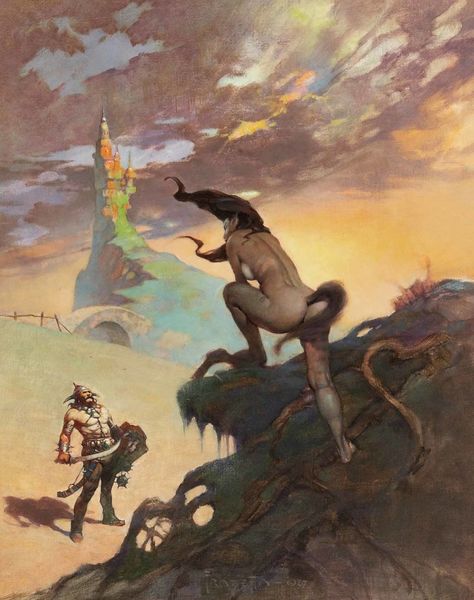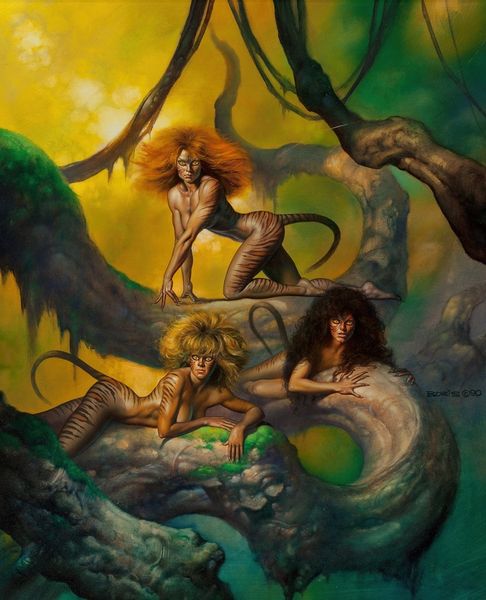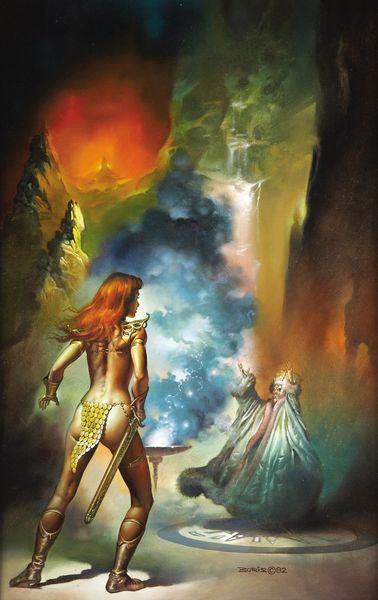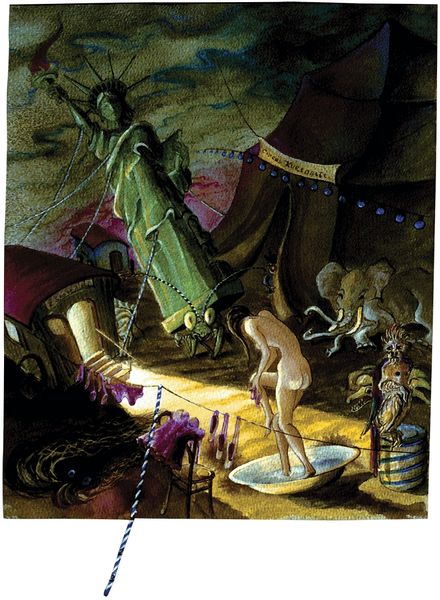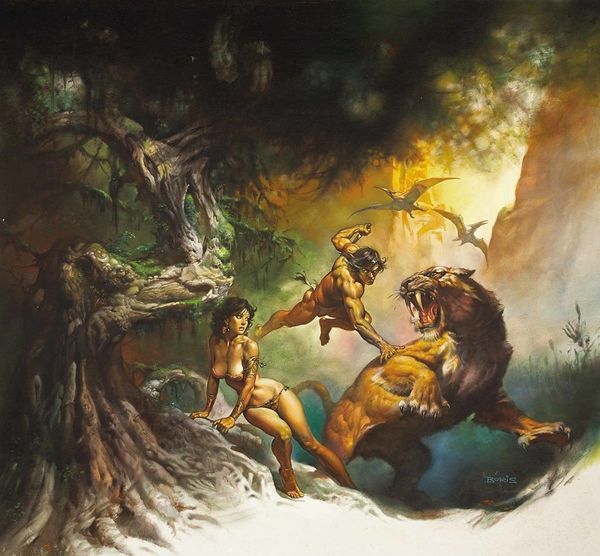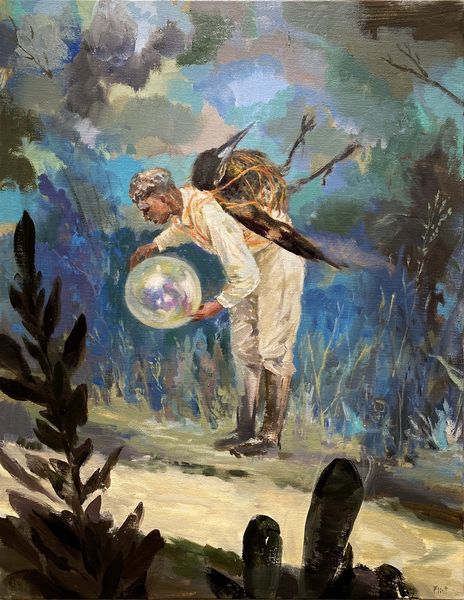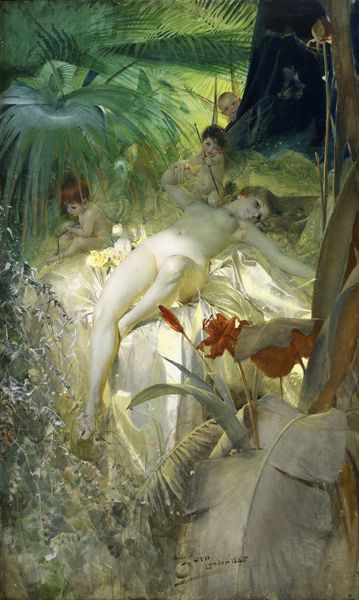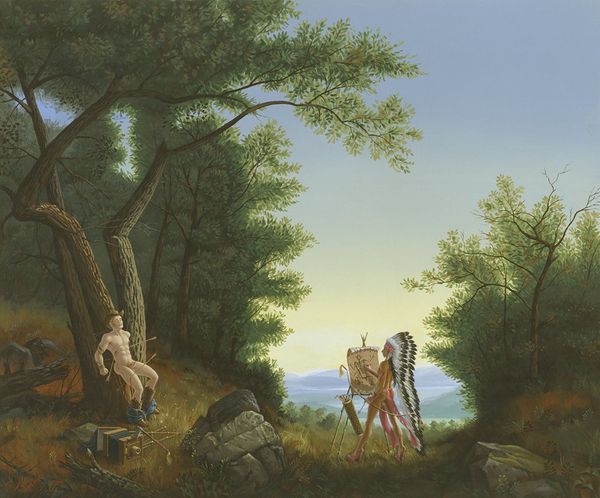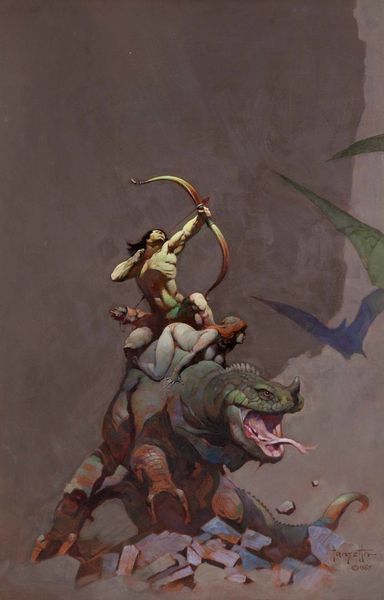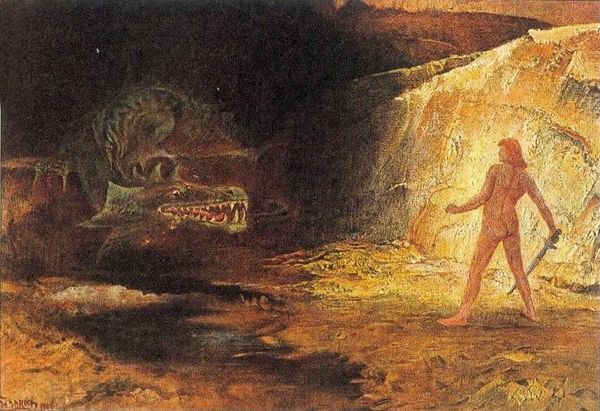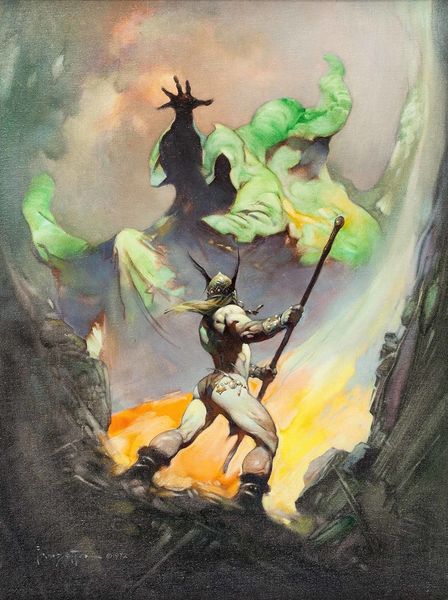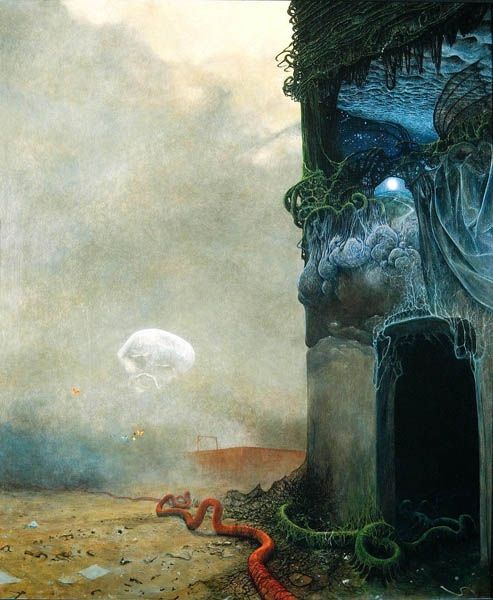
Copyright: Public domain
Curator: This is Maximilian Pirner's 1910 painting, "Gulliver Mezi Skřítky"—Gulliver Among the Dwarves. Editor: My initial reaction is one of overwhelming scale; the subdued palette evokes a dreamlike, almost oppressive atmosphere. Curator: Precisely. Pirner was deeply engaged with allegorical themes and mythological narratives; this painting is exemplary of the Romantic style, capturing both its aesthetic beauty and ideological underpinnings. Gulliver's Travels, of course, presents an unflattering critique of European society through satire and adventure. Here, we see Gulliver rendered almost passive, an observer overshadowed by both the Lilliputians and what I interpret to be an embodiment of nature itself. Editor: Notice how Pirner crafts depth. The Lilliputians are positioned to activate Gulliver in order to complete some civic objective, drawing the eye upwards, where Gulliver intersects and perhaps obscures nature itself, and then returns the eye toward a third character looking at him at his base. Curator: His relationship with women should not be ignored. Much of Pirner's artistic trajectory was centered on portraying women as embodiments of beauty or moral allegory. Note here what could easily be interpreted as his male gaze on Gulliver. Editor: I understand. It’s curious, though, that he almost disappears into the landscape. Pirner's choice of colors creates an earthy and somber atmosphere that doesn't align easily with pure romantic beauty. His integration is almost parasitic—what do you make of that? Curator: Perhaps Pirner critiques Western imperialism and patriarchal power through Gulliver’s helplessness. Gulliver, the symbol of European dominance, becomes immobilized by the systems and people he aimed to subjugate. He is absorbed, visually, into an ecology beyond his control. Editor: I agree. The color choices invite us to scrutinize systems of power—Pirner doesn't simply romanticize the conquest narrative. I came here expecting beauty, but found instead a deconstruction of visual dynamics. Curator: An astute observation—the piece is deceptively complex. Hopefully, you'll leave with a deeper appreciation of the nuances present in Pirner's vision. Editor: Indeed; what started as a seemingly straightforward piece unveils complex structures of power, which are anything but. Thank you for revealing these elements.
Comments
No comments
Be the first to comment and join the conversation on the ultimate creative platform.
